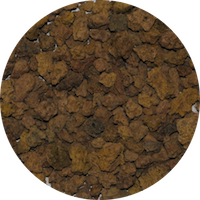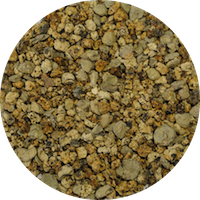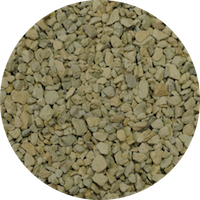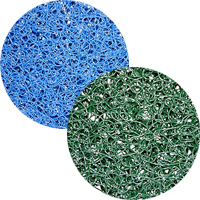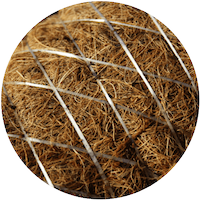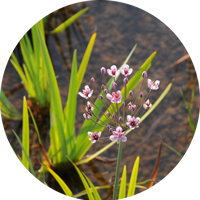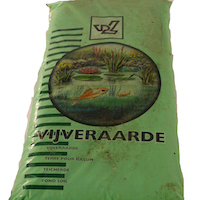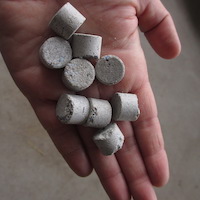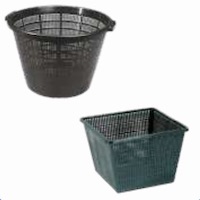Filter materials
When you need to filter the water you have to:
- mechanically remove suspended solid pollutants (leaves, dust, debris, etc.) that remain trapped in the filter media,
- remove biological contaminants that are in solution (compound of carbon, nitrogen, phosphorus, etc.) that are biologically transformed by bacteria and protozoa that live on the seafloor filtering
- restore vitality to the water (to be evaluated, for example, with capillary dinamolisi, sensitive crystallography or other radionics)
To do this, there are materials that promote the natural biological cycles. We need to design and facilitate these biological processes and then use filter materials which allow the life of bacteria and protozoa.
By treating the filter with natural methods, we leave out the chemicals that kill all life physically and energetically instead of purifying water.
Filter materials that we propose are:
Lava
LVD that does not freeze and with high porosity
The product of the Italian quarries is pretty good. Having tried many products we can give you advice on the product that is best suited to the biological filtration of water.
Grain size: 10-20 mm (sometimes 20-40 mm)
Bovis Value: 50.000 units
Yin: 70 %, Yang 30 %
Filter substraat
The filter substraat is a mineral mix cooked in a blast furnace at over 1000° C so as to create a physical structure extremely porous. The product is particularly suitable for filtration in water because despite being very porous and incompressible this material does not float.
Grain size: 10-20 mm (sometimes 20-40 mm and 5-10 mm)
Bovis Value: 12.500 units
Yin: 60 %, Yang 40 %
Zeolite (> 90% Clinoptilolite, > 2% Montmorillonite)
Zeolite is a mineral of volcanic origin, formed through long phases of transformation of volcanic lava. The word Zeolite means "boiling stone" for its characteristic to release water vapor from the rock when subjected to heating. This phenomenon is due to the particular presence of water trapped in the crystalline cavities. Water molecules and ions with high mobility give the Zeolite high bioactivity.
Zeolite has a crystal structure very open, high cation exchange capacity (CEC), elevated structural criptoporosity (over 200 m2 of surface area per gram of product), reversible dehydration and molecular sieving.
Grain size: 6-9 mm
Bovis Value: 90.000 units
Yin: 30 %, Yang 70 %
» Technical sheet «
Matala
Matala is a synthetic material designed for filtration in aquaculture and koi ponds. Unlike other materials it has the advantage that can be easily cleaned from deposits of organic material and bacteria.
As it is done with large interstitial spaces, rarely it clogs up and stays very effective.
The two different density at constant surface area of 120 cm x 100 cm x 4 cm are:
Green Matala: 9 sqm of surface
Blue matala: 11,50 sqm of surface
Coconut pipeDrainage pipe PE with coconut ø 50 mm - 50 m long coil. These pipes are used for wetland systems in the filter area of natural lakes. They are incompressible. The natural coconut fiber makes no synthetic pollutants. It keeps its characteristics unchanged for a long time, being formed almost exclusively by lignin.
» Technical sheet «
Aquatic plants
Biological filtration of the water of a lake is still complete only when there are aquatic plants. Wetland system acts both for adsorption (plants absorb from the water some pollutants) and promoting growth of aerobic bacteria in the water by releasing oxygen from the photosynthesis. The oxygen is released during the day both by the aerial submerged part and by the roots. In this way, plants, bacteria and protozoa with the substrate correctly act biologically purifying the water.
Soil for aquatic plants
The soil for aquatic plants is suitable for all marsh plants, bog plants and submerged plants. It is a specific soil that does not release nutrients into the water and therefore does not favor the development of algae.
Fertilizer tablets
New fertilizer tablets for aquatic plants. The specially balanced formula for aquatic plants has been enriched with humic acids that favor the absorption of nutrients and stimulate the development of the root system. The tablets buried near the plants nourish them without favoring the development of algae. If used for flowering plants such as water lilies and lotus flowers, they also favor large blooms.
Aquatic plant potsVarious size of aquatic plant pots:
- round: ø 22 cm h 12 cm - ø 40 cm h 29 cm
- square: 19x19 cm h 9 cm - 28x28 cm h 18 cm
- kidney-shaped: 45x18 cm h 15 cm
Other filter materials
For other specific applications like:
- koi ponds
- prechambers in wetland systems
- settling tanks
are used in addition other filter materials: filter brushes (of different sizes), bioball and biocell.
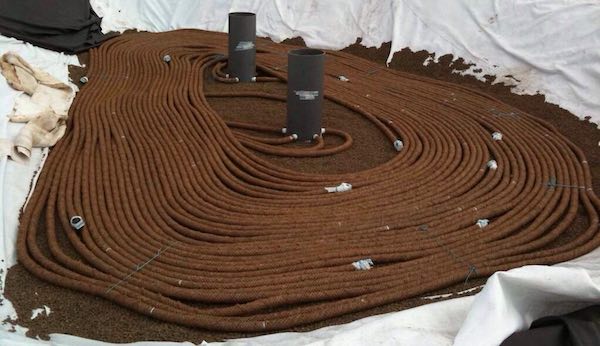
Technical materials for Up-flow and Down-flow filtration
A helophyte filter is a plant filter that works as a complete biological filtering system and is used to purify natural swimming ponds. Water plants and bacteria form the biotope and purify the water with the help of filter material such as lava, substrate and zeolite, a pump provides circulation. There are two filtration principles:
Up-flow helophyte filter
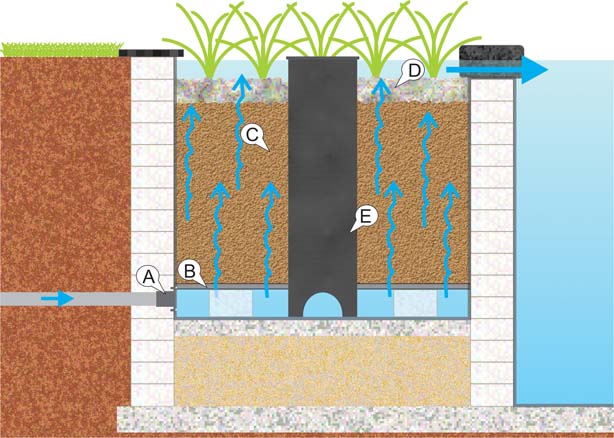
Required materials
Quantity, diameter and lengths vary per project.A. Tank connector.
B. Grid with vegetation mat.
C. Clean lava or pond substrate.
D. Zeolite or Clinopti.
E. Inspection pit.
Down-flow helophyte filter
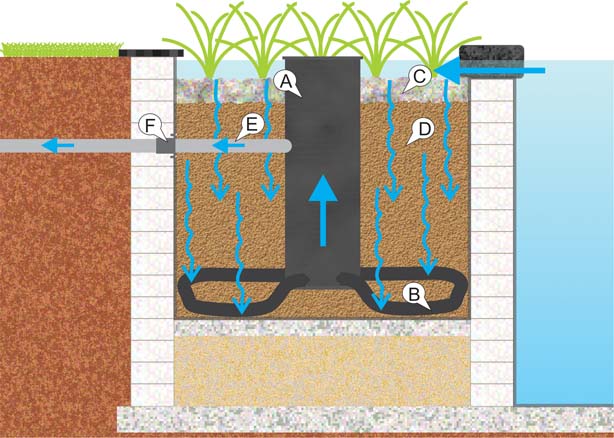
Required materials
Quantity, diameter and lengths vary per project.A. Drain collector.
B. PE drainage pipe covered with coconut.
C. Zeolite or Clinopti.
D. Clean lava or pond substrate.
E. PVC pipe.
F. Tank connector.
Up-flow helophyte filter operation
Unfiltered water floows via the bottom drains and/or skimmers to the technical pit and is then pumped at the bottom of the filter bed and flows through the filter back into the swimming pond. Any remaining dirt can be periodically pumped out via the dirt remover using a drainage pump.
In this system floating contamination is collected in any skimmers installed and a pre-filter sieve filter, before it can reach the filter bed. The helophyte filter is burdened far less as a result.
Down-flow helophyte filter operation
Unfiltered water flows over the pond overflow into the helophyte filter and sinks. The pump in the technical pit sucks up the purified water through a perforated drainage hose, which is connected to a drain collector and pumps the water back into the swimming pond.
Dirt collects on the filter bed with the water flow and must be periodically removed.
Characteristics of Up-flow filtration
• Excellent contamination management.
• Less burden on the substrate bed.
• Lower maintenance frequency.
• Pre-filtration possible.
• Higher laying costs.
Characteristics of Down-flow filtration
• Lower technical costs.
• Higher maintenance frequency.
• More bottom contamination.
• Pre- ltration is not possible with this construction.
Helophyte filters application
This filtration system construction can be used for any type of pond, in which large water volumes must be biologically purified. The required dimensions and materials often constitute practical obstacles for achieving this.
The combination of a (smaller) helophyte filter with a pre-filter (sieve filter or drum sieve) is a common alternative.

